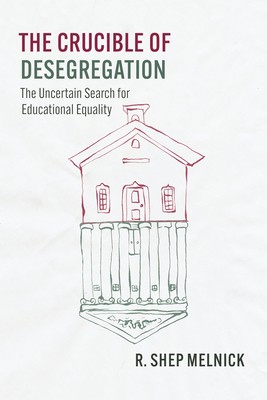
- We will send in 10–14 business days.
- Author: R Shep Melnick
- Publisher: University of Chicago Press
- ISBN-10: 0226825523
- ISBN-13: 9780226825526
- Format: 15.2 x 22.9 x 1.9 cm, softcover
- Language: English
- SAVE -10% with code: EXTRA
Reviews
Description
Examines the patchwork evolution of school desegregation policy. In 1954, the Supreme Court delivered the landmark decision of Brown v. Board of Education--establishing the right to attend a desegregated school as a national constitutional right--but the decision contained fundamental ambiguities. The Supreme Court has never offered a clear definition of what desegregation means or laid out a framework for evaluating competing interpretations. In The Crucible of Desegregation, R. Shep Melnick examines the evolution of federal school desegregation policy from 1954 through the termination of desegregation orders in the first decades of the twenty-first century, combining legal analysis with a focus on institutional relations, particularly the interactions between federal judges and administrators. Melnick argues that years of ambiguous, inconsistent, and meandering Court decisions left lower court judges adrift, forced to apply contradictory Supreme Court precedents in a wide variety of highly charged political and educational contexts. As a result, desegregation policy has been a patchwork, with lower court judges playing a crucial role and with little opportunity to analyze what worked and what didn't. The Crucible of Desegregation reveals persistent patterns and disagreements that continue to roil education policy.EXTRA 10 % discount with code: EXTRA
The promotion ends in 19d.16:20:02
The discount code is valid when purchasing from 10 €. Discounts do not stack.
- Author: R Shep Melnick
- Publisher: University of Chicago Press
- ISBN-10: 0226825523
- ISBN-13: 9780226825526
- Format: 15.2 x 22.9 x 1.9 cm, softcover
- Language: English English


Reviews